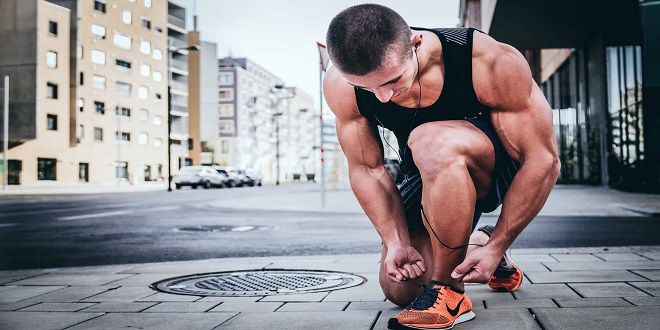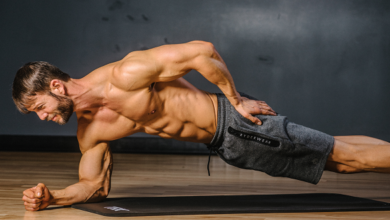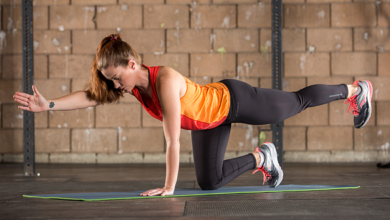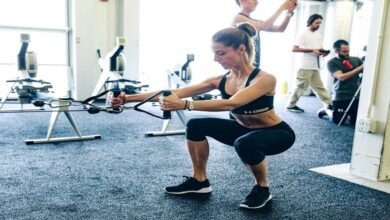7 Weeks to Getting Ripped Program

The workouts are performed 3 times a week with at least 1 day of rest in between. From experience, Monday, Wednesday and Friday seem to work the best. If you’re planning to start the workout on a Monday, you should take the initial “Power 4” test on the previous Thursday or Friday. If you’re new to working out or are returning after some time off, you’ll most likely be sore for 1–2 days after taking the initial test. Giving yourself 2– 3 days to recover before you start the program is a great idea and increases your chances of success.
Reading the Charts
The program is broken down into a series of weeks. Each week has three workout days, so looking at the example for Day 1, Week 1: After warming up for 5 minutes, you’d do 5 chin-ups, 10 squats, 10 push-ups, a 30-second plank and then rest for 2 minutes before starting set 2. Continue until you’ve finished all 3 sets and then move on to the cardio/game component before stretching at the end.
Medicine Ball Push-Up
Medicine ball push-ups require you to use a host of different supporting muscles throughout your upper body and core to stay stable while you complete the movement
Assume a push-up position but place a medicine ball under one hand while keeping the other hand flat on the floor. Engage your core to keep your spine erect and keep your body in a straight line from head to toe.
Pull-Up Grip Variations
While the overall pull-up movement and muscles activated are the same, each grip variation has its own advantages, targeting slightly different muscles. It’s a great idea to rotate through different grips during each set of pull-up exercises. Here are the main recommended grips listed from easiest to hardest:
UNDERHAND (CHIN-UP) GRIP
Grab the bar with your palms facing you. This movement is easiest because it allows you to use more of your biceps to complete the motion. On average, underhand pull-ups are about 10–15 percent easier than overhand pull-ups.
NARROW GRIP
Grab the bar (underhand or overhand) with your hands 3–6 inches apart. Because of the close proximity of your hands, you may need to lean back a bit so you don’t smack your face on the backs of your hands. Also, due to the compact nature of bringing your arms in medially, you’ll engage your core a bit more than during a standard overhand pull-up. Narrow-grip overhand pull-ups are generally easier than a standard overhand pull-up and emphasize the lower lats.
NEUTRAL GRIP
In order to do this type of pull-up, you’ll need to use a pull-up apparatus with handles that are 90° in relation to a normal pull-up bar. These handles will allow you to create a hand position where your palms are facing each other about 8–12 inches apart. Neutral pull-ups are the most natural hand position and allow significant use of the biceps, upper chest and core. With neutral pull-ups, it’s important to remember to engage your upper back muscles, as it’s possible to “cheat” and use your biceps as the prime movers.




